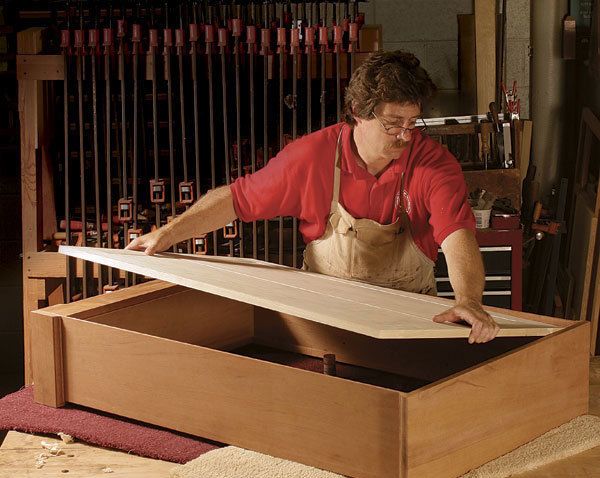A Back for Every Cabinet
The right choices balance strength, appearance, and efficiency
Synopsis: Cabinet backs are often overlooked when it comes to design, because in many cases they are hidden from view. But there are times when you want a case back to be as beautiful as it is functional. Contributing editor Steve Latta demonstrates how to make a sturdy and attractive cabinet back using two stylish options: slatted construction and frame-and-panel. Slatted backs can be shiplapped, splined, or tongue-and-groove, with edge details to vary the look. Frame-and-panel backs can be of plywood or solid-wood construction.
Like many avid readers and collectors, I have a lot of bookcases. Over the years, I’ve jammed some of them so full that paperbacks are wedged into any usable opening. the shelves are so crowded, in fact, that it’s almost impossible to see the back of the case. For strictly functional cabinets like these, a sturdy back can be as simple as a plain sheet of plywood.
But there are other types of cases that need a good-looking back, and some instances in which an attractive back also must be rock solid.
I have display cases, for example, that house ceramics, antique tools, and other prized possessions. For cases like these, the back needs to look good. the case that holds my collection of first-edition books needs a different kind of back. It has a pair of inset glass doors, so the back must look good and also be quite rigid. that helps hold the case square and keep the doors from racking and binding, regardless of the substantial weight of the books.
Fortunately, there are several ways to make an attractive back; some combine great looks with construction rigid enough for the most demanding applications.
Apart from that bare sheet of plywood, most cabinet backs fall into two basic designs: slats or frame-and-panel. Slats offer a wide variety of looks—from rustic to refined—and their joinery allows for wood movement. They work well with open-front cases but aren’t rigid enough for cabinets with inset doors. A frame-andpanel back, whether it’s made with floating panels or glued-in plywood, is sturdier.
Slat-back options
The basic aesthetic goal for any slatted back is a pleasing, consistent pattern that doesn’t involve very narrow or wide slats on the edges. I stagger the width of the slats, using pieces around 4 in. and 5 in. wide. wider boards look better on larger backs.
For slatted backs, three basic forms of joinery come into play. In order of simplicity, these are shiplapping, splining, and tongue-and-groove.
Shiplapping—Shiplapping involves rabbetting opposite sides of the same board so that the edges of adjoining slats overlap. use a router table, a tablesaw with dado head, or a shaper; make the rabbets about 1⁄4 in. wide and half as thick as the stock.
For small cases like the one shown here, (the back is 281⁄2 in. wide and 423⁄4 in. tall), slats as thin as 5⁄16 in. would work.
From Fine Woodworking #192
For the full article, download the PDF below:
Fine Woodworking Recommended Products

Bessey K-Body Parallel-Jaw Clamp

Bessey EKH Trigger Clamps

Starrett 12-in. combination square























Log in or create an account to post a comment.
Sign up Log in